3 Ways My Students Assess Their Progress
A MiddleWeb Blog
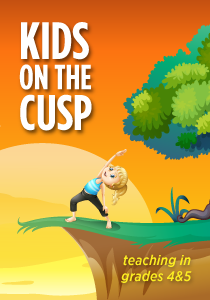
Something deep within, from years ago, is still there. It tells me that my success is somehow defined by a grade…or in this case, a statistic.
For years, I’ve been frustrated and angry about standardized testing in general, writing about it ad nauseum here at my MiddleWeb blog. Dissecting it. Needing to uncover and expose the injustice of it all.
For years, I’d been finding more and more ways to “prove” that standardized test scores do not give an accurate portrayal of my individual learners, that the use of the data generated from these test scores should be examined more closely.
So I really and truly wish that, when my principal told me I had scored well, I didn’t feel a tiny little flutter of something, deep inside my chest. I can’t quite describe this feeling, but I felt it…if only for a brief moment.
A strange sense of relief
It was some sort of mixture of pride, a strange sense of relief that I had been deemed worthy in some way, and a tiny bit of validation that somebody “out there” knew I was good at my job. Like I said, it was just a flutter, but it bothered me. As I left his office and walked back to class, I started to feel like a bit of a hypocrite.
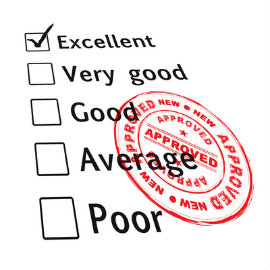
The reward for a “Straight A” report card back in my elementary days was a trip to Gruning’s, a local ice cream parlor. Ice cream was the driving factor of success.
The incentives from home and family have evolved since those days – often into excess. But, regardless of the “reward,” many kids still feel intense pressure to succeed. And they measure their worth based on a grade. This shows itself clearly when they get a test score back in class, or after a report card is sent home…like mine was on February 8th. (Margolies, 2016)
There is that initial sense of expectation (in some cases, maybe even dread) that occurs right before they find out their grade. Then I see chests puff out a bit, just like mine did the other day in my principal’s office. I also see heads bowed to hide shame. Shame is a dangerous thing.
Daring greatly
Two years ago one of the “moms” in our class gave me a very special gift. It was a book written by Dr. Brene Brown entitled Daring Greatly. I’ve been reading through it, little by little, ever since. Chapter 6 discusses Brown’s research as it relates to education.
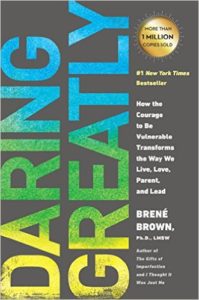
Let’s face it. There are days when teaching children is like herding puppies. Kids are curious. They explore their surroundings, bumping into each other or crawling over each other to get to the next objects of interest. This is a good thing.
There are also days when I “fail” in the moment, when some of my own shortcomings – a lack of patience, or a lack of sleep the night before – can affect my relationships with my students, especially those who need a little “extra patience.”
I’ve seen shame in the eyes of my students…and I feel shame just thinking about the times I’ve been the cause of it. Dr. Brown believes that, “Shame corrodes the very part of us that believes we can change and do better.” Shame doesn’t belong in a classroom.
Positive and constructive self-assessment
That’s where positive and constructive self-assessment come into play. I don’t want my students to feel shame. I want them to try to look at themselves (and the people around them) more realistically, and to learn to set personal goals for growth. Shame can’t be totally eradicated in life, but perhaps if I can help my learners self-assess in a positive way I can help them recognize that mistakes are okay, that we can learn from them and move forward…without shame. (McMillan and Hearn, 2008)
Brown’s research says when we allow ourselves to be “excruciatingly vulnerable,” we allow ourselves to truly connect with others. The mistakes I make, and my ability to laugh at them, show my students my own vulnerabilities. I want them to know that it’s okay to laugh with me. That it’s safe. As Brown puts it,
Connection is the energy that is created between people when they feel seen, heard, and valued – when they can give and receive without judgment.”
I share stories with my class about the life lessons I learned from my father. I’ve also shared the sadness that I sometimes still feel about his death, over a decade ago, especially when we come across a character that reminds me of him. We’ve laughed about my son’s potty training tales from days long ago. And they, in turn, share their family legend and lore with the group, safely, honestly, and often with no filter!
Ways to look at our progress
At the end of last year, our class took a look at some of the different parts of ourselves, as learners, in an attempt to accurately self-assess. At the time, I had no “official graphic organizer.” (since then, I created this graphic organizer). This year’s Room 4-T used it recently to write and reflect on our own individual progress as our second marking period drew to a close.
 My kids know it’s about more than a grade
My kids know it’s about more than a grade
There were three main areas of focus…the academic, social, and emotional trio that makes up our lives at school. I shared out a week-long reflective writing assignment, after we reviewed the organizer and glued it into our Writers Notebooks. Each of my learners was asked to write three separate responses, one for each area of themselves.
Then I took them home to read. Kids amaze me. They know it’s about more than just a grade.
So, what does a number really mean? Dr. Brown notes, “Today’s organizations are so metric-focused in their evaluation of performance that giving, receiving, and soliciting valuable feedback has become rare.”
Thankfully, the flutter I felt in my principal’s office is no comparison to the one I felt when I read the last page of “Bongo’s” Writer’s Notebook. I actually laughed out loud…Then I felt a deep contentment in my chest, it was like a warm smile, and it’s been lasting much longer than that flutter did.

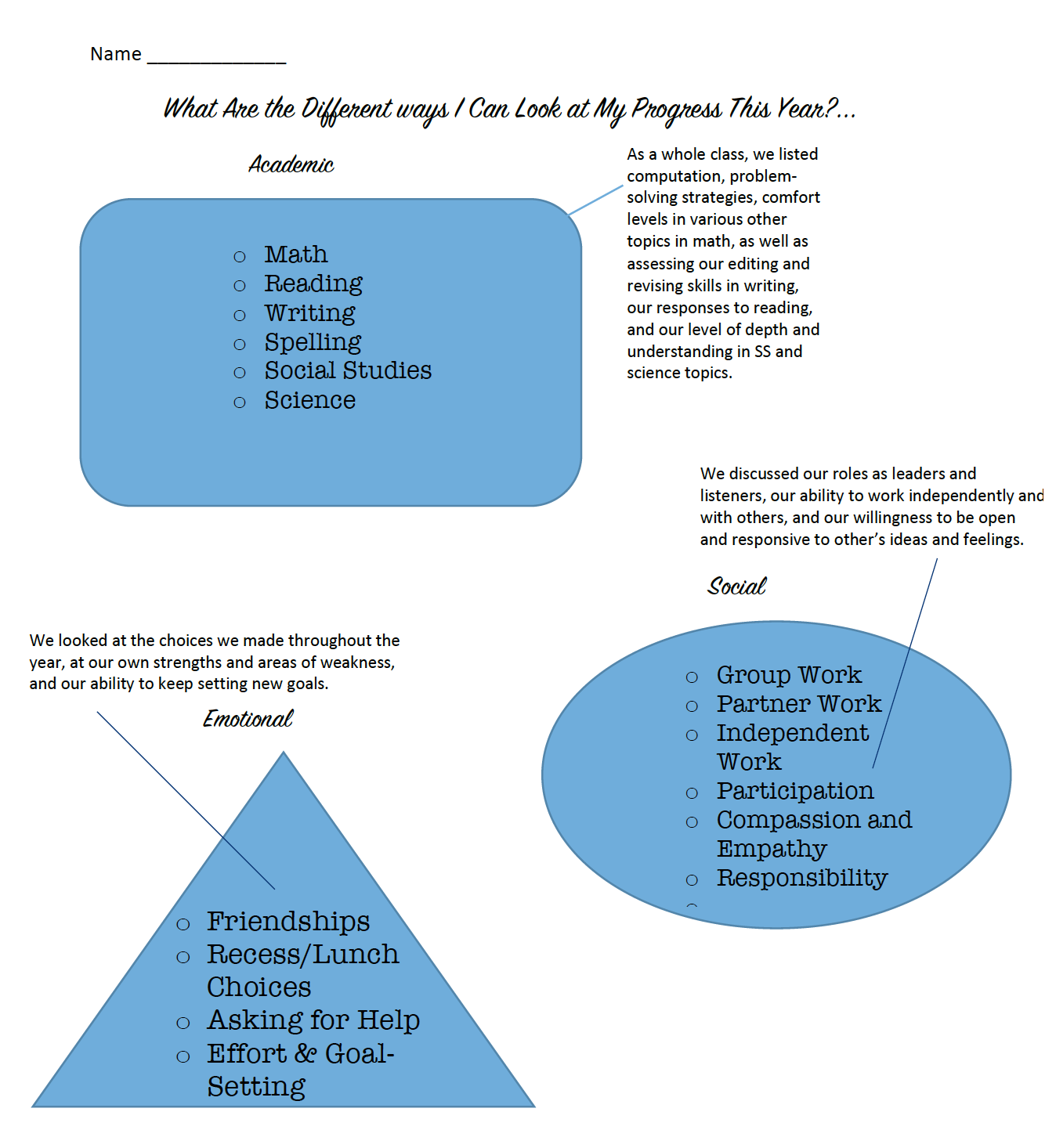
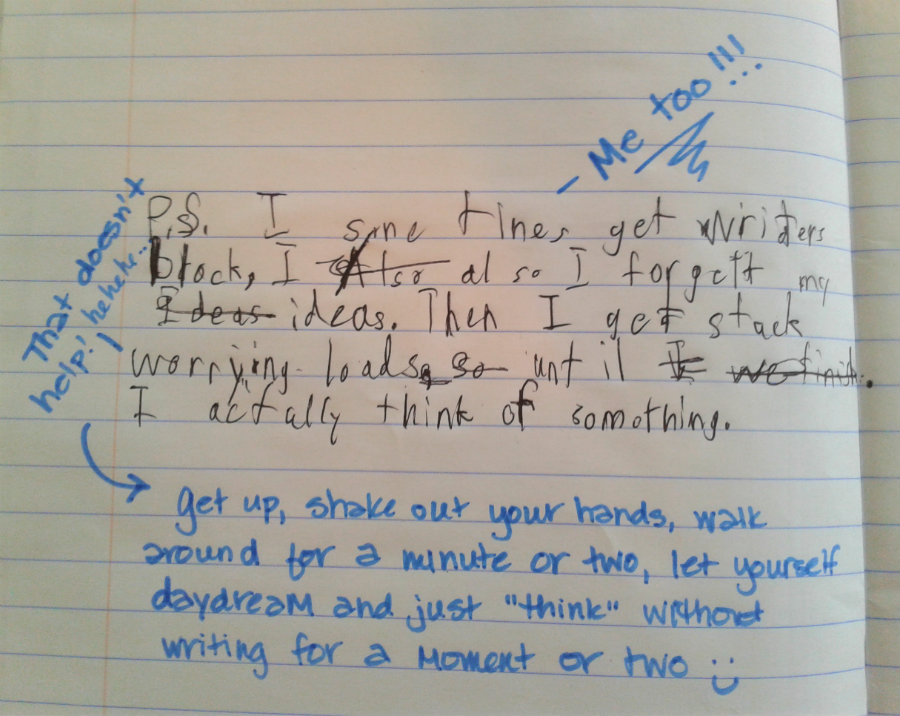
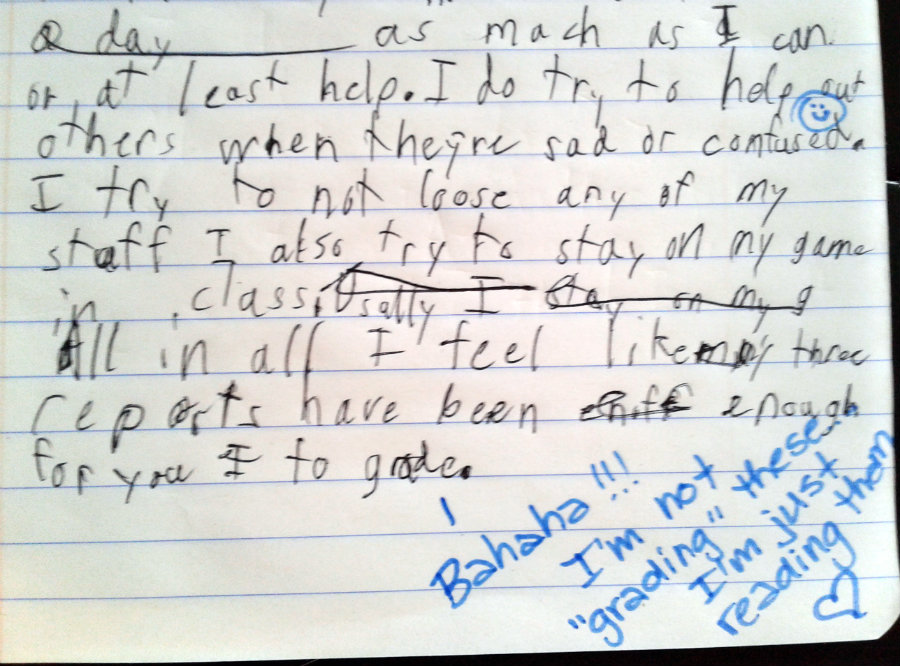

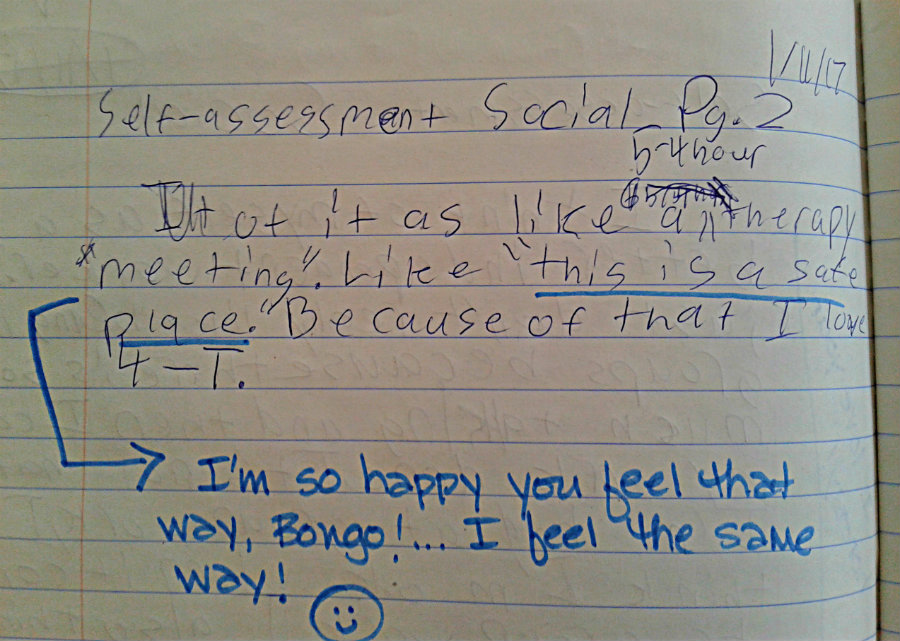


































Now this is keeping it real!